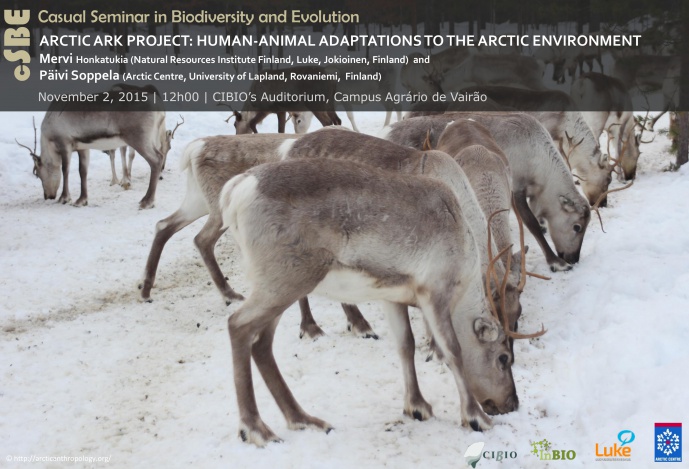ARCTIC ARK PROJECT: HUMAN-ANIMAL ADAPTATIONS TO THE ARCTIC ENVIRONMENT

CASUAL SEMINAR IN BIODIVERSITY AND EVOLUTION

Natural and human‐made selection enables animals to adapt, survive, be productive and reproduce in challenging environments. In the Arctic, traditional animal husbandry is based almost exclusively on reindeer (Rangifer tarandus) but in Lapland, northern Russia and Siberia also other locally adapted animals, namely cattle (Bos taurus) and horse (Equus caballus) are used for food production and other societal and cultural needs.
The Arctic environment guided symbiotic domesticity towards selection of animals with specific metabolic, morphological and reproductive adjustments. These animal breeds represent a valuable genetic resource for northern agriculture and pastoralism. We will focus on metabolic adaptations by hypothesizing that an animal’s ability to effectively extract, store and use energy needed to survive and reproduce in the cold climate is one of the evolutionary drivers leading to adaptation.
Adaptations to extreme environments or diets are typically associated with structural and functional genomic variations. ‘Adaptation traits’ are complex and often polygenic by nature but positive selection footprints can be studied through Next‐Generation‐Sequencing (NGS) applications, such as whole genome and mRNA sequencing, analysis of regulatory (miRNAs) elements, and DNA methylation profiles.
This project will study the interaction between genetic and socio‐cultural uniqueness of Arctic animal breeds and adaptation practices in northern Finland, Archangelsk and the Eveno‐Bytantaj region of Siberia where all three animal species form the core of animal husbandry.
[Host: Catarina Ginja, Livestock Genomics and Conservation]
Image credits: http://arcticanthropology.org/
